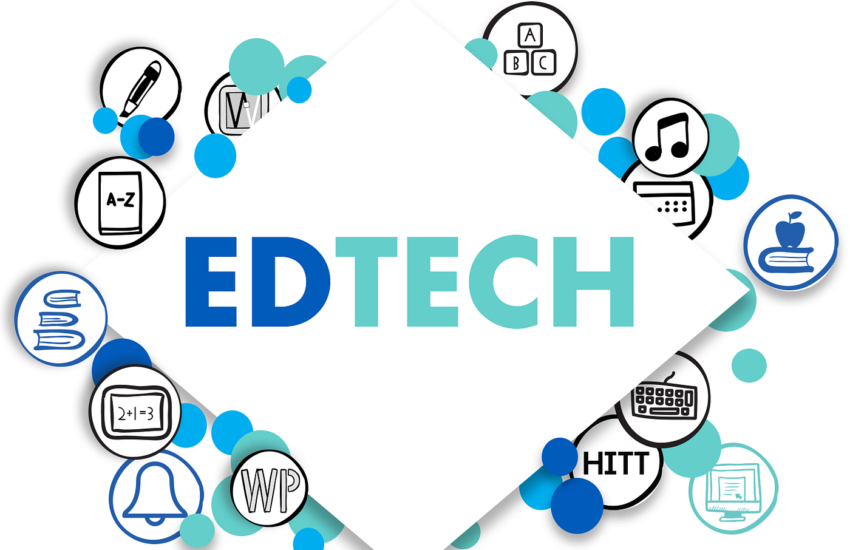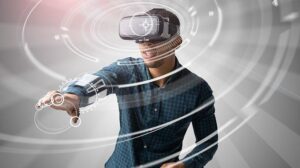Dive into our article exploring the impact of EdTech innovations on teaching and learning. Discover how these technological advancements revolutionize education, enhance instructional methods, and empower learners. Explore the transformative impact of EdTech innovations on teaching and learning today.
Welcome to our informative article where we delve into the profound impact of EdTech innovations on teaching and learning. In today’s digital age, technology has emerged as a catalyst for educational transformation, revolutionizing the way we teach and learn. In this article, we will explore the diverse range of EdTech innovations and their effects on educational practices, instructional methods, and student engagement.
From interactive learning platforms and virtual reality simulations to artificial intelligence and adaptive learning systems, these innovations have reshaped the educational landscape, offering new possibilities for personalized learning experiences.
Quick Navigation
Discover The Impact of EdTech Innovations on Teaching and Learning in 2024
Join us as we examine the transformative impact of EdTech innovations, empowering educators to create dynamic, interactive, and student-centered learning environments. Through the integration of these technologies, teaching becomes more engaging, adaptable, and inclusive, catering to diverse learning styles and promoting deeper levels of understanding. We will delve into case studies, research findings, and real-world examples to showcase the effectiveness of EdTech innovations in fostering collaboration, critical thinking, and problem-solving skills among learners.
Discover how EdTech innovations have the power to break down geographical barriers, bring learning opportunities to underserved communities, and create a more equitable educational landscape. Step into the world of EdTech innovations and witness the profound impact they have on teaching and learning. Embrace the opportunities they present for educational transformation, and prepare to unlock the full potential of students in the digital era. Let’s explore the impact of EdTech innovations on teaching and learning and embark on a journey of educational advancement in the 21st century.
Introduction to EdTech
EdTech is the process of leveraging technology to enhance the learning experience. This technology can range from computer hardware, software, UX/UI, and harnessing digital publishing. EdTech is becoming one of the hottest topics of discussion among parents and educators around the world. Whilst education has remained broadly the same for hundreds of years, new technology is now changing that, transforming the way teachers teach certain topics and becoming an essential part of classroom life.
Read Also: 10 Law Schools in Europe That Teaches In English
Latest EdTech Innovations
-
Virtual Reality
Virtual reality (VR) is an immersive technology that allows students to experience a simulated environment. VR can be used to create interactive learning experiences that are engaging and memorable. For example, students can take virtual field trips to historical sites, explore the human body, or visit different parts of the world without leaving the classroom. VR can also be used to simulate real-life scenarios, such as medical emergencies, to help students develop problem-solving and critical thinking skills.
-
Gamification
Gamification is the use of game design elements in non-game contexts, such as education, to increase engagement and motivation. By incorporating game elements, such as points, badges, and leaderboards, into learning activities, students are motivated to participate and compete with their peers. Gamification can make learning more fun and interactive, increasing student engagement and motivation.
-
Artificial Intelligence
Artificial intelligence (AI) is the use of computer algorithms to perform tasks that typically require human intelligence, such as speech recognition, decision-making, and language translation. AI can be used in education to personalize learning by providing students with different levels of challenge and feedback based on their individual needs and abilities. AI can also be used to automate administrative tasks, such as grading and testing, to free up teachers’ time for more meaningful interactions with students.
Read Also: List Of Top 13 Best Economics Universities in Europe
-
Mobile Learning
Mobile learning is the use of mobile devices, such as smartphones and tablets, to deliver educational content. Mobile learning allows students to learn anytime, anywhere, and at their own pace. Mobile learning can also be used to provide students with immediate feedback, which helps them identify areas of strength and weakness. By receiving feedback in real-time, students can adjust their learning strategies and improve their performance.
-
Cloud Computing
Cloud computing is the delivery of computing services, such as servers, storage, databases, and software, over the Internet. Cloud computing can be used in education to provide students and teachers with access to educational resources from anywhere, at any time. Cloud computing can also be used to store and share educational content, such as videos, presentations, and documents, with students and teachers.
Influence of EdTech on Teaching and Learning
EdTech has had a significant influence on teaching and learning. Here are some of the ways EdTech has impacted education:
Read Also: Dangote Refinery Recruitment 2024/2025 Application Portal – Apply Now
-
Personalized Learning
EdTech has made personalized learning possible by providing students with different levels of challenge and feedback based on their individual needs and abilities. This can help students learn at their own pace and feel more in control of their learning.
-
Increased Engagement
EdTech has increased student engagement by making learning more fun and interactive. By incorporating game elements, such as points, badges, and leaderboards, students are motivated to participate and compete with their peers. Gamification can make learning more enjoyable, increasing student engagement and motivation.
-
Improved Learning Outcomes
EdTech has improved learning outcomes by providing students with immediate feedback, which helps them identify areas of strength and weakness. By receiving feedback in real-time, students can adjust their learning strategies and improve their performance. EdTech has also made learning more accessible to all learners, including those with disabilities.
-
Enhanced Collaboration
EdTech has enhanced collaboration by providing students with tools to work together on projects and assignments. For example, cloud computing can be used to store and share educational content, such as videos, presentations, and documents, with students and teachers. This can help students learn from each other and develop important social skills.
Challenges of EdTech
While EdTech has many benefits, it also comes with several challenges. Some of the challenges include:
-
Resistance from Students and Teachers
Some students and teachers may resist EdTech because they view it as a distraction or a waste of time. It can be challenging to convince them of the benefits of EdTech and to get them to participate.
-
Lack of Understanding
Another challenge of EdTech is the lack of understanding of the EdTech process. Teachers may not know how to design effective EdTech learning experiences or how to integrate EdTech with the curriculum.
-
Cost
EdTech can be expensive to implement, especially for schools with limited budgets. Schools may need to invest in hardware, software, and training to effectively integrate EdTech into the classroom.
Read Also: 7 Cheap Universities in Ontario
EdTech Innovations on Teaching and Learning have transformed the way we teach and learn. The latest EdTech innovations, such as virtual reality, gamification, artificial intelligence, mobile learning, and cloud computing, have made learning more engaging, personalized, and accessible.
we have explored the profound impact of EdTech innovations on teaching and learning, unveiling a new era of educational possibilities. The impact of EdTech innovations on teaching and learning is undeniable, as these technological advancements have revolutionized traditional educational practices and opened doors to new and engaging learning experiences.
By harnessing the power of interactive learning platforms, virtual reality simulations, artificial intelligence, and adaptive learning systems, educators have the opportunity to create dynamic and personalized learning environments that cater to the unique needs and interests of each student.
Through these innovations, teaching becomes more engaging, adaptable, and inclusive, fostering collaboration, critical thinking, and problem-solving skills among learners. EdTech innovations have also transcended geographical barriers, enabling access to quality education for students in underserved communities and bridging the gap between learners from different parts of the world. The transformative impact of EdTech innovations extends beyond the classroom, as they prepare students for the digital age and equip them with the necessary skills to thrive in a rapidly evolving world.
As we embrace the potential of EdTech innovations, it is crucial to ensure equitable access to these technologies and to continue exploring ways to maximize their benefits in educational settings. The future of teaching and learning is increasingly shaped by EdTech innovations, and educators must remain open to embracing and adapting to these advancements.
By leveraging the power of EdTech innovations, we can create a learning ecosystem that nurtures curiosity, creativity, and lifelong learning. Let us continue to explore, innovate, and harness the potential of EdTech to unlock the full potential of teaching and learning, ultimately shaping a brighter future for education.
Citations:
tech.ed.gov NETP17.pdf
See also:
Trust you found our article on The Impact of EdTech Innovations on Teaching and Learning helpful. Follow our website for more informative articles.



